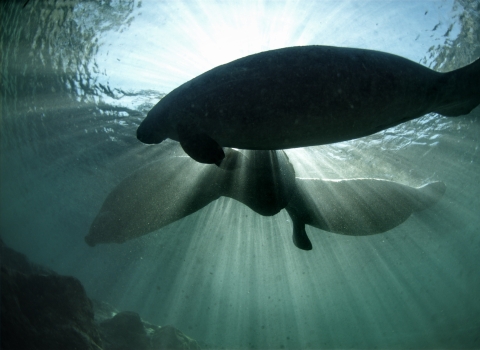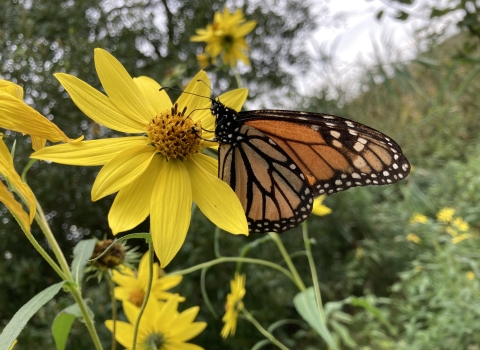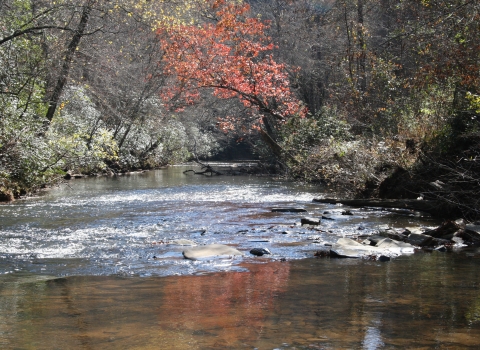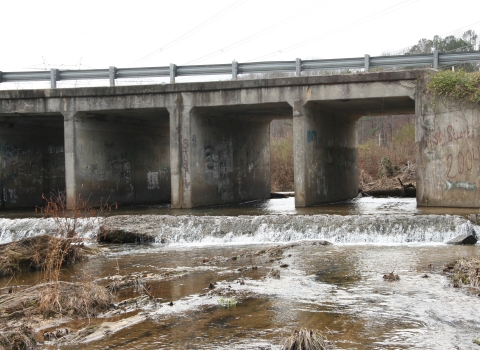Projects and Research
Our team supports conservation efforts at multiple scales, from on-the-ground species monitoring and habitat restoration to broader landscape-level planning.
Learn more about our efforts.
They provide a beneficial service by foraging on flying insects, many of which are pests. Georgia is home to 16 species of bats. Some of these appear to be adaptive; they opportunistically roost and forage in altered habitats such as suburban and agricultural landscapes. A few species, however, have specific habitat...
Coastal Georgia’s subtropical ecosystem is a mosaic of barrier islands, marsh hammocks, freshwater wetlands, salt marshes, estuaries, and rivers. Marsh hammocks were named as one of the most endangered landscapes by Scenic America, a national conservation organization.
Coastal Georgia is home to: Six counties that front the...Few places in the Nation can boast more about plant biodiversity than Georgia. And it’s no secret why. Glacial ice never crossed our state boundaries that stretch from the sub-tropical climate on our island-studded coast to the rugged Appalachian mountains. For centuryupon-century complex landscape and geology, sweeping fires, and other forces provided a...
On December 12, 2024, the US Fish & Wildlife Service (Service) published a proposal to list the Monarch butterfly (Danaus plexippus) under the Endangered Species Act as threatened. For more information on this proposal, please visit the Service’s Monarch Species Page.
Monarch Butterfly Habitat in Georgia: The monarch butterfly is found in open habitats across Georgia...
Anyone can be...
The Coosa River Basin is a hotspot for freshwater biodiversity and the focus of substantial research and conservation effort. The Upper Coosa consists of three headwater rivers, the Conasauga, Coosawattee and Etowah, their many tributaries and the agricultural, industrial, rural and densely populated lands that surround them. These watersheds are home to a dozen threatened or...
We are proud to now offer an online and audio-described version of the "Bats in Bridges" training! This course is intended to help you understand methods to assess transportation structures for the potential of bat use and occupancy, while providing some basic facts about bats life history and their habitat needs. GAES Biologist Laci Pattavina...
Few people consider the effects of culverts, utility crossings, and other infrastructure on the quality of stream habitat. Stream conditions may be quite different upstream and downstream of a stream road crossing, and may look different during low or high water. The design and condition of a stream crossing determine whether a stream behaves...
Mitigation refers to projects or programs that help offset negative impacts to natural resources, such as a stream, wetland, and species-at-risk. When projects are unable to avoid adverse impacts to a threatened or endangered species, mitigation represents an alternative way to support conservation and comply with the Endangered Species Act. Developers may purchase "credits...







